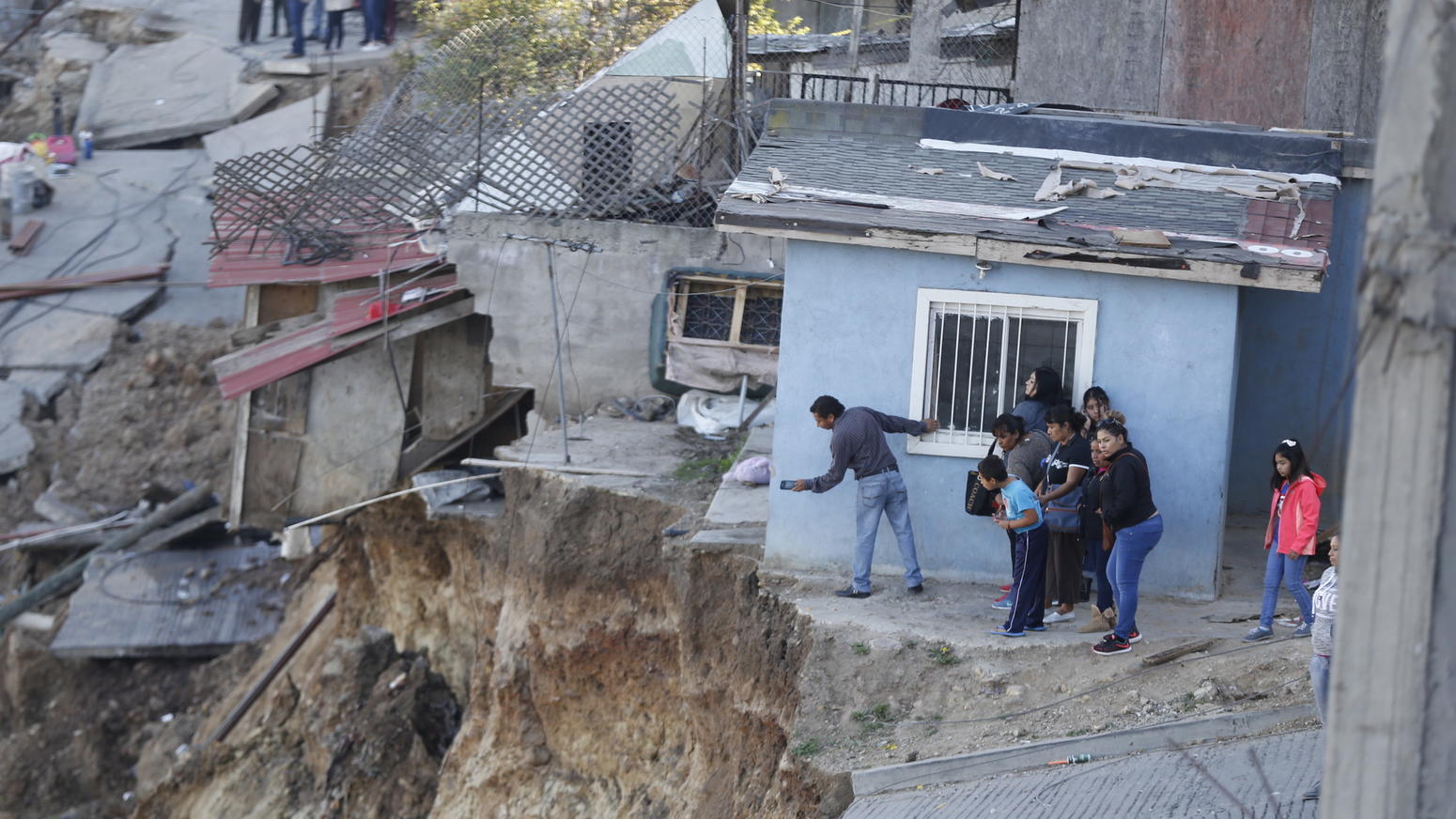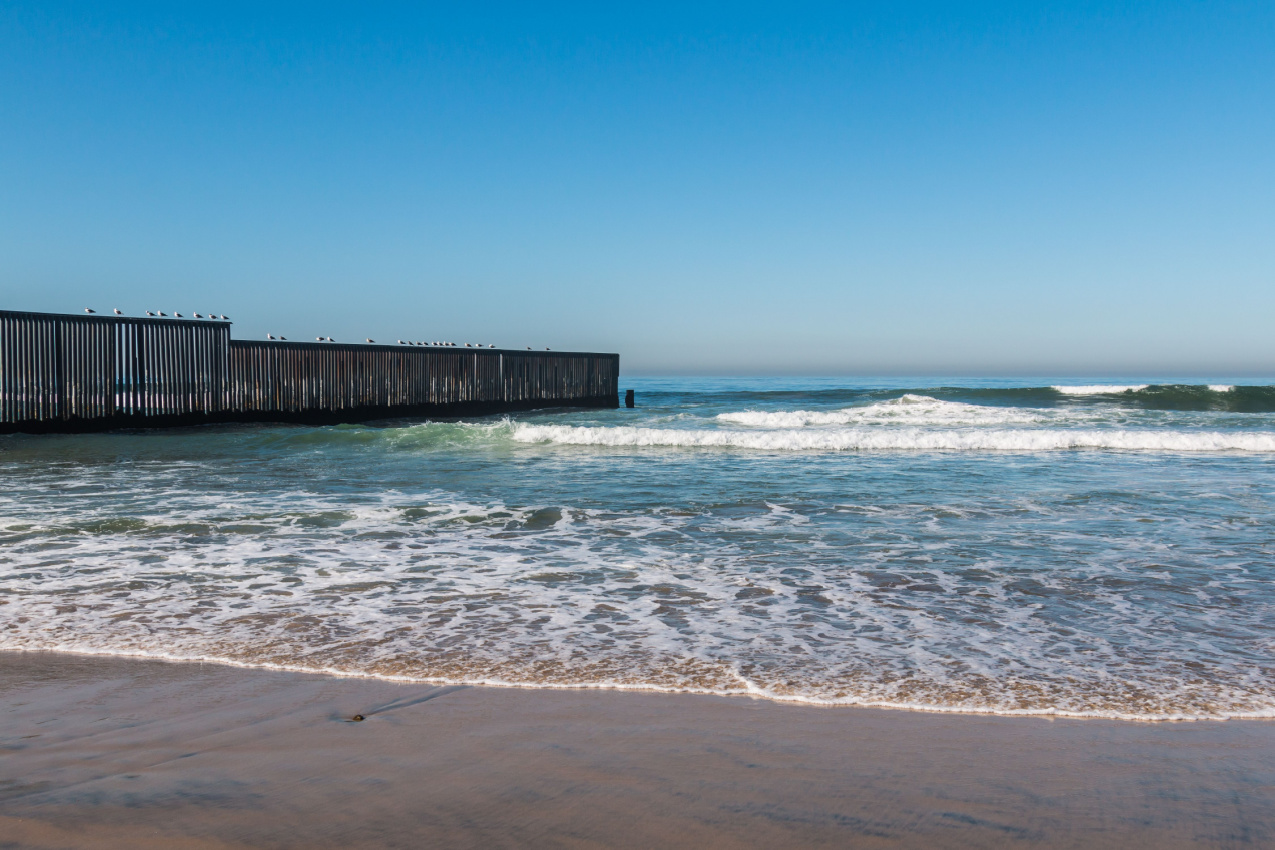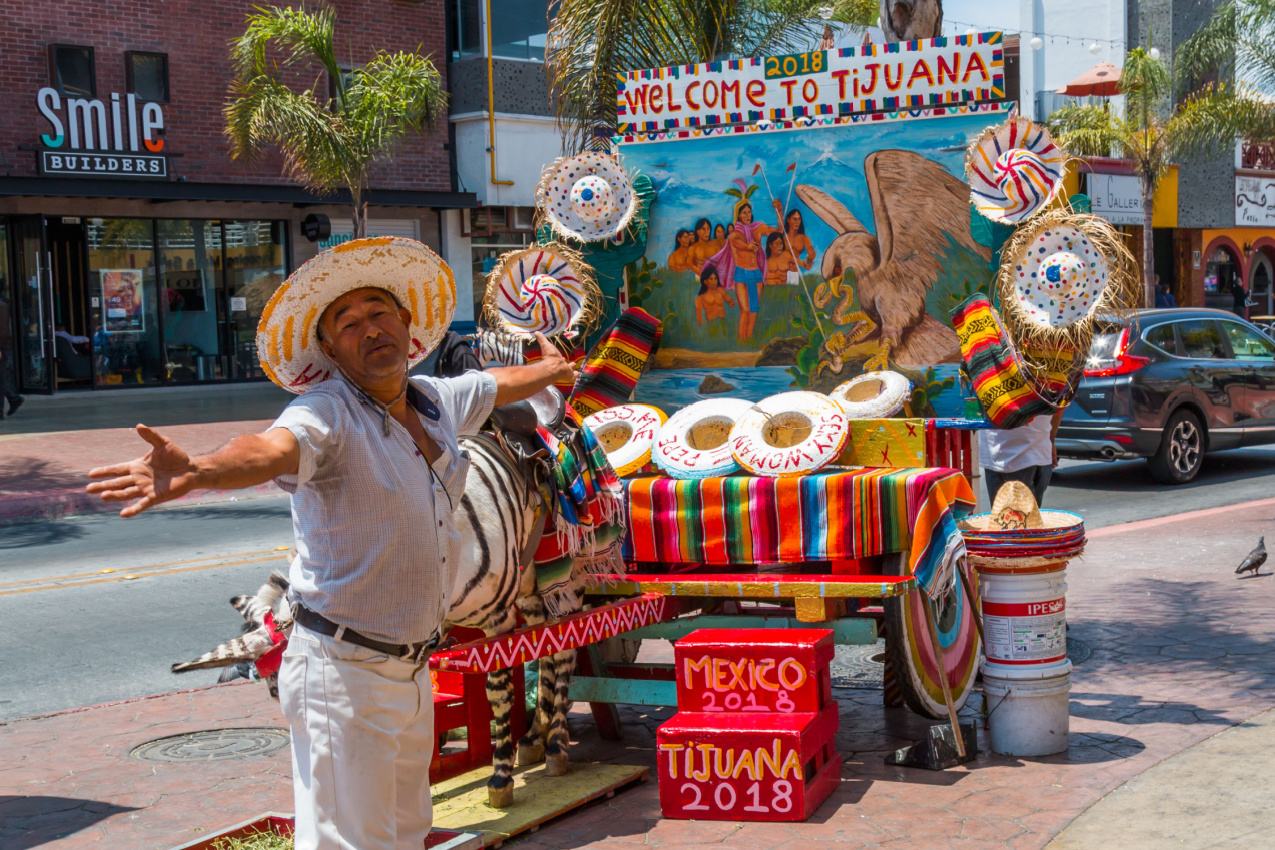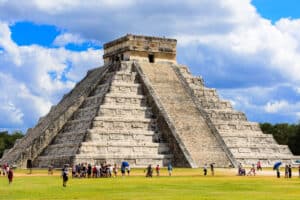Welcome to Tijuana, the Mexican city that never sleeps! Today, we address the burning topic on every traveler’s mind: How secure is Tijuana for travel in 2024?
Short answer: Tijuana is not a safe travel destination, and there are some serious risks associated with it.
However, we recognize that in some cases, travelers must pay a visit to this destination. Our detailed guide will provide vital information and practical tips to help you have a safe and enjoyable trip in these circumstances.
Your safety is our top priority, and we are here to help you navigate the city as safely as possible. Let’s get started.
Are you planning a last minute trip to Tijuana? We’ve put together all the resources you’ll need for a fun & safe travel:
🛌 Best & Safest Places to Stay in Tijuana:
👉 Quartz Hotel – Outdoor swimming pool, Room service, Fitness centre
👉 Marriott Tijuana Hotel – City view, Balcony, Outdoor swimming pool
👉 Camino Real Hotels – Air conditioning, Fitness centre, Free WiFi
👉 K Tower Boutique Hotel – Private bathroom, Free WiFi, Balcony
⛱️ Fun Activities & Tours in Tijuana:
👉 Private Full-Day Guided Tour of Tijuana
👉 THE TIJUANA EXPERIENCE Craft beer & food private tour
👉 Know Tijuana with a Local
🚗 Best & Safest Tijuana Transportation Services:
👉 Airport Pickup Service – Welcome Pickups
👉 Rent a Car – DiscoverCars
🙏 Stay Safe While Travelling:
👉 Safetywing (for medical insurance)
👉 VisitorsCoverage (for trip insurance)
Unveiling the Reality: A Comprehensive Look at Tijuana’s Crime Rates
Tijuana is located in Baja California, about an hour south of downtown San Diego, making it a convenient alternative for nearby adventurers.
Tijuana boasts superb Mexican food, a busy nightlife, stunning beaches, and colorful marketplaces.
However, since it’s next to the US border, cartels have taken advantage of its location and established narco-trafficking and smuggling routes.
The prevalence of violent crime and gang activities has made Tijuana one of Mexico’s most dangerous cities, and the US State Department has flagged this as a very high-risk location.
Tijuana was named the world’s most violent city in 2019, with 134 homicides per 100,000 people. We can see a continuation of this trend in the first four months of 2023.
Crime Rates in Tourist Areas
According to the U.S. State Department, most of this kind of violence takes place in Tijuana’s non-tourist areas. However, the location of these incidents is exclusively determined by cartel activity, and sometimes territorial disputes may occur in tourist zones.
According to Tijuana’s crime statistics, pickpockets are especially active in tourist locations. Since tourist areas are always lively and crowded, it’s easier for theft to go unnoticed.
Criminals search for potential scam victims as well. For example, taxi drivers could con you, especially if you flag one down the street.
The Citizen’s Council for Public Safety stated that 90% of the criminal activities committed in Tijuana remain unpunished.
What Is The Police Doing to Protect Tijuana?
According to the Citizens Council on Public Safety for Baja California, Tijuana has 2,500 police officers, a very small number for such high crime levels.
The police force in Tijuana is overworked. Every day, officials deal with hundreds of cartel-related incidents, and at the same time, they must maintain regional order because thousands of tourists visit the city.
The Tijuana police force is underpaid, especially since they are out in the open patrolling. So, while some officials are all about fighting crime with righteousness, others choose to make a bit of extra money by sweeping countless crimes under the rug. Some elicit bribes from tourists for minor offenses.
Since Tijuana is the principal entry point for narcotics into the United States, controlling it is crucial to the cartels. These cartels, therefore, dominate the military and the police force.
Navigating the New Normal: Ensuring COVID-19 Safety in Tijuana
A negative COVID-19 test isn’t a criterion for entrance into Mexico. You can travel to Tijuana without testing for the virus.
However, travelers and crew members arriving in Tijuana via land or air may have their body temperatures checked. Those who show symptoms may be subjected to additional testing or placed in quarantine.
Tijuana’s hospitals, clinics, and laboratories offer private testing for COVID-19. Viral antigen testing costs between 200 and 1000 MXN ($11 and $55), and PCR tests typically cost between 950 and 4500 MXN ($53 and $250).
Given that COVID-19 is still circulating and spreading, taking precautions is necessary to prevent it. The American Red Cross has compiled a list of all the precautions you need to take to travel to Tijuana safely and in good health. The two key ones are keeping a distance from people and regularly washing your hands.
Perils of Nature: The Risk of Natural Disasters in Tijuana

Three natural disasters threaten Tijuana: earthquakes, volcanic eruptions, and hurricanes.
Earthquake Information and Precautions
Tijuana is located in Baja California, part of the Pacific Ring of Fire, a region notorious for frequent earthquakes.
From May 30 to May 31, 2023, Tijuana experienced 52 earthquakes with magnitudes below 2. These earthquakes are very light and hardly noticeable to people. There were also 2 stronger earthquakes over magnitude 3.
Visit the VolcanoDicovery website to stay current on all the most recent earthquakes that have struck Tijuana and the region around this city.
To stay safe, the American Federal Emergency Management Agency advises people to fix any structural issues in their homes that may collapse the building during an earthquake. If an earthquake happens and you find yourself in bed, lie face down and use a pillow to support your head and neck. If you are stuck in a building after the quake has ended, try to send a text or bang on a wall or pipe to make others hear you.
Bonus Tip: Download the 911 CDMX app on your smartphone and get an earthquake alert 60 seconds before it occurs.
Volcanic Eruptions Information and Precautions
Volcán de las Tres Virgenes is the nearest active volcano to Tijuana. It’s roughly 200 miles (320 kilometers) south of Baja California Sur.
This volcano isn’t particularly close to Tijuana, but it’s essential to recognize that volcanic eruptions can be unforeseeable and may impact the surrounding areas.
For example, ashfall may cause respiratory issues, whereas the sulfur dioxide and carbon dioxide that spread into the air can alter air quality in neighboring places, causing health concerns for humans and animals.
To stay current on volcanic activity, visit the Mexican Disaster Prevention Centre’s website. In addition, to prepare for a natural catastrophe, the American Red Cross offers advice on how to keep yourself and your family safe during a volcanic eruption.
Hurricane Information and Precautions
Tijuana is positioned outside the central storm belt, often affecting areas further south. However, the weather is unpredictable, and tropical storms or hurricane remnants can strike Tijuana or its surrounding areas anytime.
A storm of such magnitude happened in September 2022, then another in January 2023, causing floods and landslides throughout Baja California State. Two people died, two others were saved, and some houses were demolished due to the landslide, while two more died in a flood.
Visit The National Hurricane Service to stay updated on weather forecasts, and follow the Massachusetts Emergency Management Agency’s safety tips if a natural catastrophe should occur.
Breathing Safely in Tijuana: Carbon Monoxide Awareness and Prevention
Carbon monoxide poisoning occurs when a person inhales carbon monoxide gas, which can be produced by fires and equipment that burn gas, wood, oil, or coal. Carbon monoxide gas is colorless and odorless, so you can’t tell if and when it’s leaking.
Carbon monoxide poisoning symptoms might vary depending on the degree and length of exposure, but they can include headaches, dizziness, nausea, disorientation, weakness, chest discomfort, and loss of consciousness.
If inhaled over an extended period, it can be fatal.
A terrible occurrence involving carbon monoxide poisoning occurred in Tijuana many years ago, in 1990, with fatal consequences for twelve individuals. This occurred at a religious service due to an unintentional carbon monoxide leak.
CO poisoning can be avoided with today’s advanced technology. When planning your vacation in Tijuana or anywhere else, ensure the place you’re staying has at least one Carbon Monoxide detector. It’s also wise to bring a backup detector in case the hotel or rental unit doesn’t have one or if it malfunctions.
Serenity by the Shore: The Safety of Tijuana’s Beaches

Mexico has many beaches known for their high levels of violence and crime. Still, Tijuana’s beaches do not appear to fit into that category, as we haven’t seen any news reports about it.
The dangerous germs in the water, though, make Tijuana’s beaches unsafe for tourists and residents. Regular tests were conducted at five different places along the Tijuana beachfront, and all results showed positive water contamination.
The environmentalist Fernanda Rochn encourages individuals not to go in the water or walk on the sand since it acts as a filter for bacteria. According to her, people may develop respiratory problems, rashes, stomach issues, and ear infections if they do.
Nevertheless, thousands of tourists visited the beaches in Tijuana in 2023, despite official and environmental organization warning, and illnesses followed.
When it comes to ocean fauna, shark encounters are rare in Tijuana and usually occur further offshore. However, a reported incident occurred in 2009 when a hammerhead shark bit a surfer’s leg.
There have been no known incidences of shark attacks since then, and if there is any increased shark activity, the local authorities will undoubtedly issue advisories or temporary beach closures.
Nevertheless, you should always be mindful of your surroundings when swimming in the ocean, and avoid swimming alone or at night or morning when sharks are most active. Don’t wear flashy jewelry or brightly colored swimsuits, and most importantly, avoid swimming with open wounds or when on your period.
Tijuana’s Weather Patterns: What to Expect?
Tijuana enjoys two seasons: wet and dry.
Tijuana’s wet season begins in late October or November and lasts until April or May. During this time, there’s more rainfall and thunderstorms.
The dry season in Tijuana lasts from roughly May or June through September. Tijuana has little rain at this time, and the weather is generally dry and sunny.
Weather Overview in Tijuana
Summer
Tijuana’s summer season spans from June through September. Summers in this region are hot and largely dry, with little rain. As a result, the average temperature is around 68°F (20°C), and the maximum it can reach is 95°F (35°C).
Fall
Tijuana’s fall season begins in October and wraps up in November. Tijuana experiences cooler temperatures and more rainfall in the fall. The temperature is usually around 77°F (25°C). The nights become colder, with a minimum temperature of 62°F (16°C).
Winter
Tijuana’s winter season begins in December and concludes in February. Tijuana’s winters are pleasant and occasionally wet. During the day, average temperatures vary from the mid-60s°F (about 15-20°C) to the mid-40s°F (approximately 5-10°C) at night.
Spring
Tijuana’s spring season lasts from March until May. In the spring, temperatures steadily rise, and the weather becomes drier. The average temperatures are around mid-60s°F (about 15-20°C). Nights are often cooler, with temperatures in the 50s°F (about 10-15°C).
When Is the Best Time to Visit Tijuana?
The ideal time to travel to Tijuana is spring (March to May) and fall (October to November).
When you travel to Tijuana at these times of the year, you may participate in outdoor activities, comfortably see the city’s attractions, and get a taste of the local way of life without dealing with extreme heat or excessive rainfall. Additionally, compared to the busiest summer months, spring and fall tend to be less crowded, providing travelers with a more laid-back and enjoyable traveling experience.
Exploring Tijuana Solo or With a Family: Is It a Good Idea?

The U.S. State Department has made it clear that traveling in Tijuana comes with a high risk of crime.
However, if you travel to Tijuana at your own risk, you should follow some safety guidelines.
Essential tips for staying safe:
- Learn some basic Spanish to help you fit in more easily
- Both “Uber” and “DiDi” are excellent cab services
- Don’t wave at random cabs on the street
- Get a Mexican SIM card
- Know emergency numbers, 911 for police, 066 for ambulances, and 080 for fire services
- Book your stay in reputable hotels, hostels, apartments, or guesthouses
Tips for traveling alone:
- Dress discreetly
- Don’t wear flashy jewelry
- Never walk alone at night
- Never leave food or beverages unsupervised
- Avoid getting drunk
- Be aware of your surroundings. If you have a bad feeling about a person or a place, go with your gut and avoid it
- Ignore catcallers and never get into a confrontation
- Inform someone close to you of your travel plans and what you want to do throughout the day
- Establish connections with the resort’s personnel
- Don’t accept illegal substances. Kindly refuse them
- Don’t go too far from your hotel or the area where you reside
- Don’t carry too much cash on you. Leave some in your hotel or apartment
Tips for traveling with your family:
- Rather than taking taxis, rent a car
- Find a hotel that offers many family activities
- Pack a first-aid kit
- Drink responsibly so you can keep an eye on your children
- Never let your kids by themselves, especially when they are in the water
- Never separate while exploring
Conclusion
When it comes to Tijuana, your biggest ally is knowledge. Yes, Tijuana has a vibrant atmosphere, but it’s crucial to realize that certain areas may represent significant risks to your safety and security.
The United States State Department warns of high levels of crime. As a responsible tourist, you may wish to explore safer alternatives.
However, if you venture to Tijuana, educate yourself and proceed with caution, be street-smart, and take appropriate measures to safeguard yourself and your valuables.



